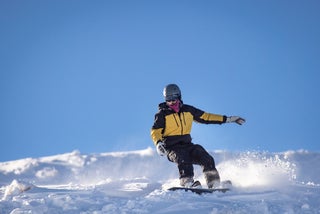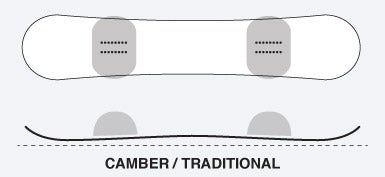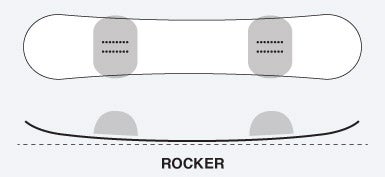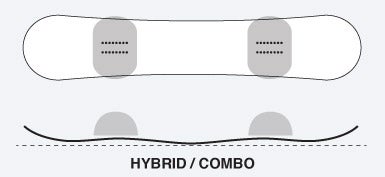How to Choose a Snowboard
How to Choose the Right Snowboard: A Beginner's Guide
Introduction
Choosing your first snowboard can be an exciting yet daunting experience. With so many options available, it's essential to understand the key factors that will help you select the perfect board for your height, riding style, and preferred terrain. In this guide, we'll walk you through the process of choosing the right snowboard, so you can hit the slopes with confidence and make the most of your snowboarding experience.
Understanding Snowboard Profiles
Snowboard profiles refer to the shape of the board when viewed from the side. The main profiles are:
Flat Base
Flat snowboards have no bend through the body of the snowboard, until after the widest part where the tip and tail start to rise up. Flat base snowboards fit right in the middle of camber and rocker, and take a number of design benefits from both. Flat boards are more responsive and are faster edge to edge than rocker snowboards, but aren’t as responsive as camber – a happy medium and often a great compromise for intermediate snowboarders.
Camber
Camber boards when laid flat on the ground have a slight upward curve towards the centre of the board, with the curve ending at the widest part of the snowboard touching the ground. Camber snowboards offer precise edge hold and are powerful into, and out of the turn.
Camber offers a powerful, stable, and responsive ride that is incredibly versatile, and favoured by the more experienced rider.
Rocker
With upturned ends of the board, the rocker design makes buttering and jibbing easy. If you’re still getting the hang of things, a rocker design is more forgiving as it is less likely the board’s edge will catch.
At low speeds rocker snowboards are playful to ride, however become unstable if you are looking for a high speed ride downhill.
Hybrid
Hybrid profiles are designed to give the best of both worlds, with power and edge hold through camber under foot, yet providing easy turn initiation, float, and forgiveness with rocker in tip and tail. In essence a hybrid snowboard is an all-rounder and is generally a happy medium that isn't overly specific to a particular terrain.
Selecting the Right Size
Choosing the right size snowboard is crucial for maintaining control and stability. As a general rule, the board should reach between your chin and nose when standing upright. However, factors such as your weight and riding style also play a role in determining the ideal size. Consult the manufacturer's size chart for specific recommendations based on your height and weight.
Matching Your Riding Style and Terrain
Different snowboard shapes and features are designed to excel in specific conditions and riding styles. Here are some common board types:
- All-Mountain: Versatile boards that perform well in various conditions, suitable for beginners and intermediate riders.
- Freestyle: Shorter, more flexible boards designed for tricks, jumps, and riding in terrain parks.
- Freeride: Longer, stiffer boards built for stability at high speeds and navigating challenging terrain.
- Powder: Wide, tapered boards with a directional shape, designed to float effortlessly in deep snow.
Bindings: The Connection Between You and Your Board
Snowboard bindings come in two main styles:
- Strap Bindings: The most common type, featuring adjustable straps that secure your boots to the board.
- Rear-Entry Bindings: Also known as speed-entry bindings, these allow you to slide your foot in from the back, making it easier to get in and out of your bindings.
Choose bindings that are compatible with your boot size and riding style, and ensure they are properly adjusted for a secure and comfortable fit.
Caring for Your Snowboard
To keep your snowboard in top condition, follow these simple maintenance tips:
- Wipe down your board after each use to remove dirt and moisture.
- Store your board in a cool, dry place during the off-season.
- Regularly wax your board to maintain its base and protect against damage.
- Repair any chips or scratches promptly to prevent further deterioration.
Looking after your board and skis means your will be able to enjoy the mountain riding at your best. This video is here to help show you the best way to do this- watch now
Finally...
Choosing the right snowboard is essential for a fun and rewarding snowboarding experience. By understanding the key factors such as board profiles, size, riding style, terrain, and bindings, you can make an informed decision when selecting your first board. Remember to take care of your snowboard to ensure it lasts for many seasons to come. Now that you're armed with this knowledge, it's time to find your perfect snowboard and hit the slopes!
Take a look at this video to help you choose the right board or pop in to store for a customized fit- watch now




